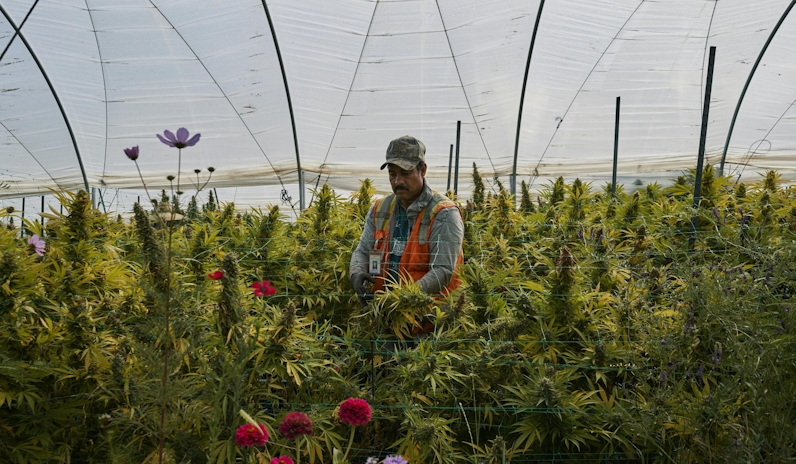
Cannabis laws in the United States are hit-or-miss. But, there’s no doubt that Americans grow some exceptional cannabis. The birthplace of High Times and contemporary cannabis culture, the United States takes the title for the best ganja in the world. While many individual states around the country produce truly top-notch, outlaw growers in Northern California have led the pack for the past four decades.
Californian’s are to thank for world-famous strains like OG Kush and Granddaddy Purple, which now dominate the North American cannabis scene. The state remains the top cannabis-producing state in the country, even though six others have legalized recreational use and an additional 32 have some form of medical cannabis program. Back in 2016, the state of California alone grew over 13.5 million pounds of the herb. As the sixth largest economy in the world, the Golden State dominated the scene regardless of state and federal laws on the subject.
Breeders in other countries, like the Netherlands, have made unforgettable contributions to cannabis culture and industry. Yet, growing cannabis in the Netherlands is technically still illegal. Due to this illegality, many growers farm in old railway cars and exclusive indoor operations. A far cry from the flower grown in remote the greenhouses and large-scale outdoor operations that are now possible in the United States. Further, many cannabis crops in the Netherlands are not tested for the presence of residual molds, pesticides, or even general potency.
For this reason, self-regulating US states have a leg-up. Craft growing and boutique strains are changing the very nature of the market, paving the way for a connoisseur culture in cannabis. Integrative laws in various medical and recreational states have created a marketplace for craft edibles, topicals, and concentrates. On the West Coast, consumers are inundated with choices–from syrupy distillates to infused gummy bears to top-shelf CBD flower. The first strains to produce over 30 percent THC were bred by obsessive gardeners in the United States.
Best Countries For Weed Smokers
Hoping to sit back and enjoy a little herb? Some places are more accepting than others. Here are the top countries for those with a cannabis-loving lifestyle:
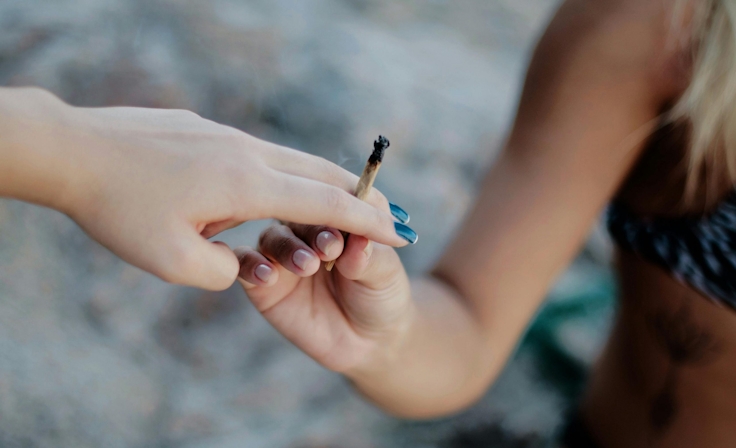
Canada
While the U.S. still takes the title for the best weed in the world, Canada is a strong and fast contender. The country legalized cannabis nationwide in October of 2018, opening the doors to a new multibillion-dollar industry. Edibles and infused drinks and goods won’t be available until 2019, but consumers can purchase and possess up to 30 grams of dried flower. Cannabis, however, must be consumed on a private residence.
The Netherlands
If kicking back with some coffee and a joint are to your taste, the Netherlands is the place to be. Amsterdam has long been a mecha for herbivores, with coffee shops seemingly tucked away on nearly every Downtown alley. Consumers can legally possess up to five grams for personal enjoyment.
Jamaica
As of 2015, possession of up to two ounces of cannabis is considered a petty offense in Jamaica. The country is known for its long history of cannabis cultivation, yet the plant was illegal for over 100 years. While getting caught with cannabis could land you some jail time before, consumers today might receive a mere ticket.
Spain
Cannabis in Spain cannot be legally sold in commercial ventures like dispensaries or storefronts. Though, the herb has been decriminalized. Residents can now grow a small quantity of cannabis for their personal use or enjoy a few grams of dried flower. Only, be careful not to smoke or have product in public view! While what you do behind closed doors is your own business, Spanish authorities still look down on public cannabis smoking. If you’re growing in Spain, you can be fined a small fortune if your plants are publicly visible.
Mexico
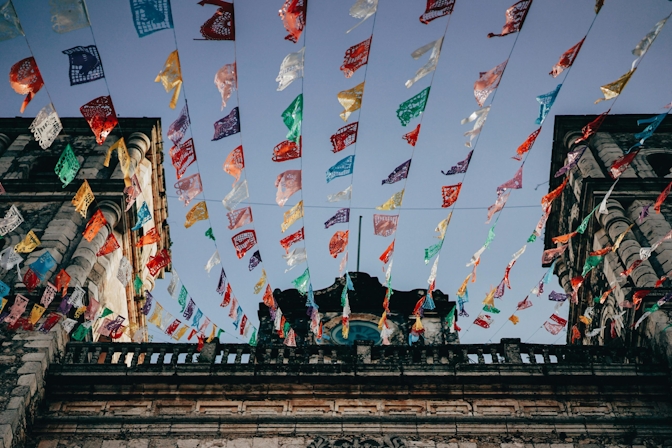
Mexico decriminalized possession of up to five grams of cannabis back in 2009. Though, recreational use of the herb is still illegal in the country. Rather than face a fine or a light jail sentence, however, those caught with cannabis may be encouraged to seek out a drug rehabilitation program. Though, given Mexico’s long history with the War on Drugs, legalizing and regulating the herb would likely be beneficial for the country.
Czech Republic
Medical cannabis has been legal in the Czech Republic since 2013, making the Central European country a leader in its region. The Czech Republic has also decriminalized possession of up to 25 grams of cannabis and the cultivation of up to five plants. Though, getting caught with the herb will still earn you a misdemeanor.
Argentina
Medical cannabis was finally legalized in 2017, and in what is perhaps the most humane move from lawmakers that anyone has seen in a while, the Argentinian government decided that patients should receive medical cannabis for free. Young Argentinians are thought to have more of a laissez-faire attitude toward public cannabis smoking, though the plant is still technically illegal. Argentina decriminalized the possession of small amounts of cannabis back in 2009, though consumers will need to enjoy the herb on a private residence. However, not all is blissful. Anyone caught growing can face up to 15 years in jail, medical or not.
Portugal
A revolutionary in terms of drug policy, Portugal decriminalized all drugs back in 2001, cannabis included. Consumers can possess up to a 10-day supply of the plant without criminal repercussions. Recreational use of the herb, however, is still illegal. Those caught with cannabis may be required to go through drug or addiction treatment, as Portugal treats drug offenders as patients and not as criminals. The country recently legalized medical cannabis earlier in 2018, though their fledgling medical cannabis program is still in development.
Best Countries for Weed Tourism

In most cannabis-friendly countries, laws are designed to benefit residents, not tourists. If you’re hoping to find somewhere nice to light up on vacation, here are the top spots for weed tourism:
The Netherlands
The Netherlands is one of only a few countries that allow social smoking. While walking around and smoking cannabis in public view is a bit of a social faux paus in residential areas, coffee shops are excellent places to both purchase flower and enjoy good conversation. With dozens of coffee shops to choose from, finding a comfortable spot to enjoy high-quality bud is an easy feat.
Jamaica
Anyone can legally smoke cannabis in Jamaica, so long as they have a doctor’s note! The country changed is cannabis policy back in 2015, decriminalizing home consumption and legalizing medical cannabis. Despite the new laws, cannabis of the illicit variety is often easier to access. While smoking in public can earn you fee, some entrepreneurs are hoping to open up licensed “spas” for tourists with medical authorizations to enjoy while on vacation. (Don’t worry, there’s a doctor on site!)
Spain
Spain is an excellent spot for cannabis tourism. Not only is the Spannabis festival one of the best cannabis festivals in the world, but the Catalan region has also developed a “social club” system much like the Amsterdam coffee shop. Fair warning, though. Weed laws in Spain are not as liberal as the Netherlands, so befriending a canna-savvy local is recommended for a true tour of the semi-underground social club circuit. Since cannabis cannot legally be sold or traded, these “social clubs” are protected by a legal loophole which allows individuals to opt into a collective that then provides a private space for cannabis-related activities.
Canada
In Canada, there’s no doubt that you’ll find some of the best cannabis in the world. The best part? It’s perfectly legal to purchase! There is one major downside for tourists, though. Unlike the Netherlands, Jamaica, and Spain, there are no coffee shops or cannabis spas for tourists to enjoy. While the country’s weed laws are still new and subject to change, tourists may still have to make a new friend or pop around to a back alley to enjoy their herb.
The United States
The United States is a great country for cannabis tourism, as long as you’re in the right spot. Hell, you can even hop onto a cannabis tour bus in many major cities, including Denver, Seattle, Portland, and Los Angeles. The only downside? It can be difficult to find a good spot to smoke. Aside from festivals like Seattle’s Hempfest, when public smoking is kindly overlooked, there are no warm and comfy coffee shops for cannabis consumers. Though, depending on where you’re visiting, public smoking is often ignored or is reprimanded by a small to medium-sized fine.
Which Countries Have The Best Weed Laws?
Just because a country has decriminalized doesn’t mean that cannabis is easy to come by. In many countries, like Mexico and Spain, cannabis still stigmatized. Possession and cultivation for personal use on private property are accepted, but cannabis should still be largely hidden from public view.

Matteo Paganelli / Unsplash
Canada
At the time of writing, Canada has the best weed laws hands down. While only home growing and flower products are available thus far, the country intends to legalize edibles and infused drinks next year. Earlier in 2018, Canada became the second country in the world to fully legalize and regulate the plant. The Great Northern nation is also the firs G7 country to do so. Individual provinces are allowed to set their own rules for the herb, but most consumers aged 18 or 19 and up can access the plant from licensed stores and access points. With any luck, other countries will soon follow in Canada’s footsteps.
Uruguay
If you’re hoping to move to a country with exceptional cannabis laws, Uruguay is an excellent choice. In fact, Uruguay was the first country to legalize cannabis back in 2013. Citizens of the country, but not tourists, can purchase up to 40 grams of cannabis per month from a pharmacy. Consumers will have to register with the government in order to buy and cannot grow the herb themselves in their homes. However, this Latin American nation has some of the best cannabis laws in the country.
Jamaica
Jamaica’s cannabis laws are not the most liberal in the world. Recreational cannabis is still illegal. However, the island country legalized medical cannabis in 2015 and with legalization came decriminalization. Both tourists and Jamaican residents can access medical cannabis with doctor’s recommendation. Jamaicans are also able to grow their own cannabis without fear of prosecution. Well, as long as you stick to just a few plants, that is.
Best Countries For Growing Weed

Photography by Matteo Paganelli via Unsplash
While many countries have decriminalized the possession and consumption of cannabis, growing is a different story. In many countries that have legalized medical cannabis or decriminalized possession, growing is still a big no-no. If you’re hoping for the ultimate freedom to do with your herb as you please, you’re best off moving to one of these places.
Canada
If you’re hoping to grow, Canada is one of the best places you can be. The plant is not only legal for recreational consumers, but residents can legally grow up to four plants in their home without a medical cannabis authorization. Different provinces, however, are able to opt out of allowing cannabis cultivation should they choose. Canadians interested in large-scale growing will have to acquire a license from their province if their province is permitting.
Jamaica
If you would like to grow as much legal cannabis as possible, living in Jamaica is one of the best bets. Though the country has a long history of prosecuting cannabis consumers, Jamaicans can now cultivate up to five plants for personal use without penalty. Just don’t sell any or try to smuggle it out of the country!
The United States
When it comes to growing, Canada and Jamaica have the United States beat. Laws in the U.S. vary from state to state, with some states being very grower-friendly and others completely intolerant. If you’d like to start up a home garden without a medical cannabis authorization, here’s where you should go:
- Alaska: three flowering plants.
- California: six flowering plants.
- Colorado: six plants.
- Maine: six flowering plants.
- Massachusetts: six plants.
- Michigan: 12 plants.
- Nevada: six plants per person, 12 per household.
- Oregon: four plants.
- Vermont: two mature plants.
Before growing, however, it is important to read up on the laws in your region. Some states, like Vermont, allow consumers to have more seedlings and immature plants than they do flowering plants. Many states also allow individual municipalities to decide whether or not they would like to allow cannabis cultivation. In this case, even if growing is legal in your state, it may not be legal in your municipality.
Which Countries Grow The Best Weed?
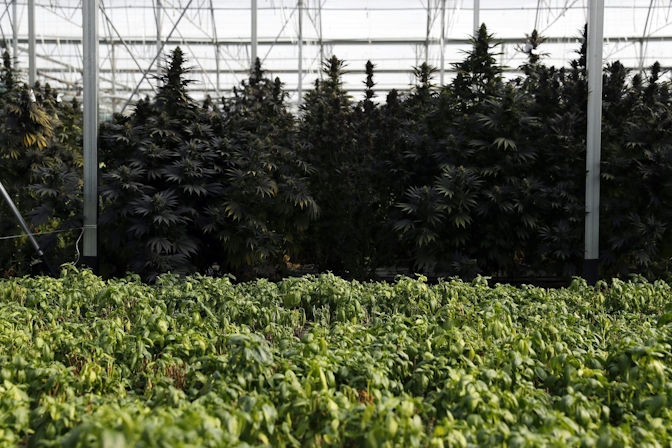
In a happy revolution that is transforming both popular culture and the international economy, cannabis is sweeping the globe. With any luck, the herb is here to stay. It’s tough to stop an idea once it’s taken off. But, apart from the United States, where should you go to find the best weed in the world?
Kazakhstan
If there is one country in the world that should legalize cannabis, it’s Kazakhstan. Back in 2006, the World Drug Report estimated that approximately 400,000 hectares of cannabis grows wild in the Central Asian country. Cannabis itself is thought to have originated in Central Asia, and the Chuy Valley region of Kazakhstan features the optimal climate and geography for growing the herb. Some reporters have even referred to the country as the “cannabis Klondike”, which is a reference to the gold rush that sent tens of thousands of miners to the Yukon region of North-Western Canada. Kazakhstan is expected to be the major supplier of cannabis to Russia, though the herb is very illegal in the exporting country. Cannabis laws in Russia, in contrast, are surprisingly lax.
India
India’s cultural and spiritual traditions have been strongly tied to cannabis for thousands of years. Considered one of the five “sacred plants,” human use of the ganja plant goes back to at least 2000 BC on the Indian subcontinent. Unfortunately, in 1961, the country signed the same international treaty that banned marijuana everywhere else on earth. The good news is that stopped practically nobody from using weed.
Cannabis is cheap (about $3 a gram) and plentiful in India. Anti-pot laws may be on the books, but they’re rarely enforced in most provinces. And the fact that holy men (sadhus) have been using cannabis as part of their spiritual quests for millennia means that cultivating potent weed is an ancient and well-practiced art here.
Spain
Spain ranks as one of the most liberal weed-smoking hubs in Europe. Some areas of the country have private cannabis clubs where marijuana can be purchased and onsite consumption is allowed. The region of Catalonia passed a generous law just this summer allowing for a network of co-ops that can cultivate and distribute cannabis.
Marijuana is illegal for commercial purposes in Spain, but, as of 2017, is officially legal for personal cultivation and use in a private space. Publicly visible home grows are frowned upon and can still result in stiff fines. Spain’s tolerance toward cultivation is quickly resulting in a renaissance of strain innovation and expertise. This certainly makes it a candidate for some of the best weed in the world.
South Africa
Ever heard of Durban Poison? If you’ve seshed with this legendary strain, you know the electrifying Sativa power of South African “dagga” (that’s their word for cannabis) qualifies as some of the best weed in the world. Like much of the rest of the planet, South Africa is currently in a nationwide discussion about legalizing the herb. Once South Africa’s politicians catch up with the wishes of their populace, it is expected that the nation’s economy will make a spectacular break from its current doldrums.
Uruguay
Uruguay, just a few years ago, became the first country in the modern world to completely legalize the sale, possession, and cultivation of cannabis.
The Uruguayan legalization scheme, in which the government is your pot dealer, seems to be working spectacularly well at providing affordable weed to the masses. In fact, Uruguay’s pot is ranked as the cheapest in the world, at a government-mandated $1 per gram.
Uruguay citizens can legally grow up to six plants for personal use, and that’s where some of the finest weed in the country can be found. A dedicated and skillful cultivation community is taking this small South American nation into an exciting future.
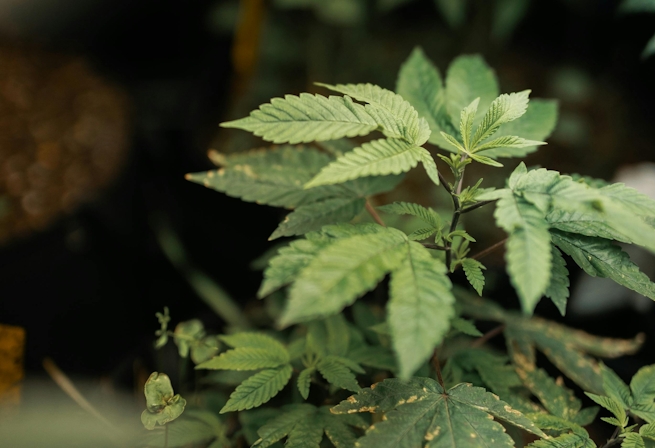
Canada
As hopefully made clear in this article, weed fever is sky high in Canada right now. Across the country, growers in every province are dreaming of creating the next big strain which will delight the cannabinoid receptors of fellow tokers from B.C. to Quebec.
Apart from the newly legalized recreational cannabis, The Great White North’s medical marijuana scene has already made Canadian weed legendary. Strains such as B.C. Hydro and B.C. Big Bud have entered the history books due to their soaring highs and beautiful appearances.
Will Canada’s craft growers, responsible for much of the knowledge and expertise around cultivating the herb, be shut out of a big-money corporate game with newfound legalization? Let’s hope not because while mass-grown, cheap McWeed has its place, the stickily seductive flowers from artisan cultivators do too.
Jamaica
This Caribbean island nation became a cannabis legend back in the 1970s with the spectacular ascent of Lamb’s Bread, a Rastafarian-inspired spiritual strain favored by Bob Marley.
Since then, Jamaica has become a popular destination for weed tourists. The government is on the verge of getting on board. It seems only right that they’d take the plunge and officially legalize ganja in the land that created reggae music.
Australia
Aussies love their weed—and they have a great climate for growing it. While the herb is not technically legal in the country, there’s no doubt that Australians have a knack for breeding and naming strains too like Mullumbimby Madness, Deep Chunk, Zoid Fuel, Rainbow Dream, and MBS (Mind, Body, and Soul).
The names of legendary growers like Kangativa and Moonunit are uttered in hushed reverence by certain sectors of the Australian cultivation community. Many of the potent Sativas favored by Kangativa tower to heights of more than 18 feet in the Australian climate.
Afghanistan
This hashish-loving nation has been growing potent Indicas for generations. Many experts, in fact, consider Afghanistan to be the mother source of all Indica strains. If you’ve ever enjoyed the multitude of Afghan hashes, or flower strains like Afgoo, Black Afghan, or Afghani Kush, you have some idea of the ancient psychoactive expertise of these mountain dwellers.
The Netherlands
The practical and tolerant Dutch were wise enough to create the modern world’s first cannabis tourist destination: Amsterdam, with its famous “coffee shops” where tourists can toke on hash and flower right at their tables.
Dutch breeders, for at least 40 years now, have been widely acknowledged as among the best in the world when it comes to creating new genetic masterpieces of cannabis. Many of the most important building blocks of modern cannabis genetics were developed in Holland, including the legendary varieties Skunk #1, Northern Lights #5, Big Bud, and Super Lemon Haze.
Mexico
Back in the 70s and 80s, Mexico was a prime exporter of cannabis. Nowadays, however, many of the classic varieties that people once risked their lives to smuggle are now difficult to come by in global markets. Oaxacan Highland and Acapulco Gold are among two Mexican Sativa landrace strains that are worth resurrecting.
Colombia
Colombia, like Mexico, was a major cannabis exporter back in the day. Now, however, prime Colombian cultivars can be difficult to find. Colombian Gold, a sticky Sativa famous for the halo of gold-tinted trichomes, is no longer very common otherwise booming North American and European markets. This landrace strain was once one of the top-rated imports from the Country. Other strain, like Punto Rojo, are also worthy of mention but tricky to find outside of Colombia.

HONEYDEW, CA – MARCH 7: Artur Gautier, operations director, prepares to water cannabis at Winterbourne Farm in Honeydew, CA on March 7, 2018. The farm is owned by Scott Davies who advocates progressive social and environmental business practices. (Photo by Bonnie Jo Mount/The Washington Post via Getty Images)
Herb Recommended Products:
READ MORE










